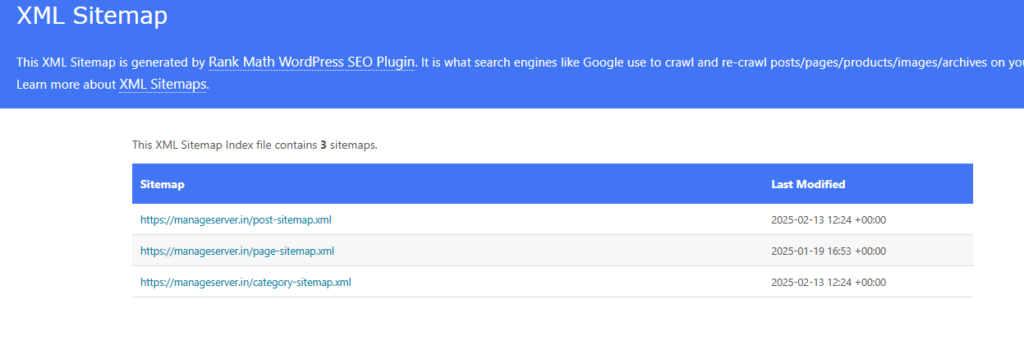How to submit a sitemap to Google in WordPress (Easy Guide)
A sitemap helps search engines like Google understand your website structure and index your content faster. If you want your WordPress site to appear in search results quickly, submitting a sitemap is essential. In this guide, I will show you how to submit a sitemap to Google in WordPress in a few simple steps.
Step 1: Check If Your Sitemap Exists
Most WordPress websites automatically generate a sitemap, especially if you use an SEO plugin like Yoast SEO, Rank Math, or All in One SEO. To check your sitemap, enter the following URL in your browser:
https://yourwebsite.com/sitemap.xmlReplace yourwebsite.com with your actual domain name. If your sitemap exists, you will see a structured page with links to different sections of your website.

Step 2: Sign in to Google Search Console
- Visit Google Search Console.
- Log in with your Google account.
- If you haven’t added your website yet, click on Add Property and follow the steps to verify ownership.

Step 3: Locate the Sitemap Section
- In Google Search Console, select your website from the left panel.
- Click on Sitemaps under the “Indexing” section.
- In the Add a new sitemap field, enter
sitemap.xml(or the correct URL if your sitemap is different). - Click the Submit button.
Step 4: Verify Submission
Once submitted, Google will start processing your sitemap. You should see a “Success” message if everything is correct. If there is an error, double-check your sitemap URL and try again.
Step 5: Monitor Sitemap Status
Google takes some time to crawl and index your site. You can check the status of your submitted sitemap anytime in the Sitemaps section of Search Console. If you see any warnings or errors, follow the provided recommendations to fix them.
Final Thoughts
Submitting your sitemap to Google is a crucial step in improving your website’s SEO and ensuring faster indexing. Keep your sitemap updated by regularly publishing fresh content, and Google will automatically recognize new pages over time. So now you have full idea
If you found this guide helpful, share it with others looking to boost their WordPress website visibility!